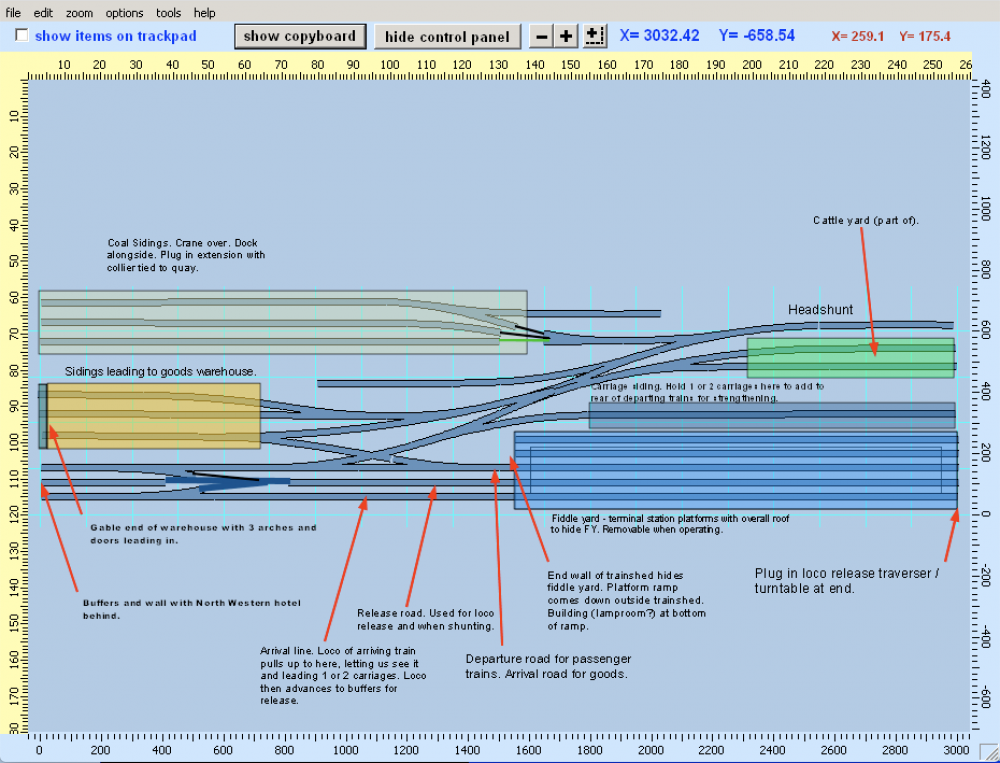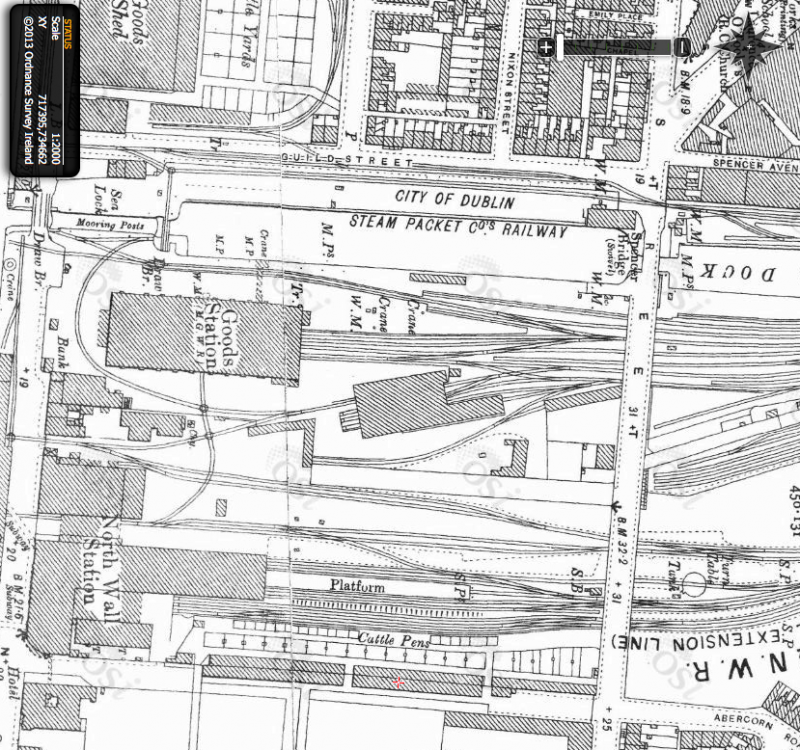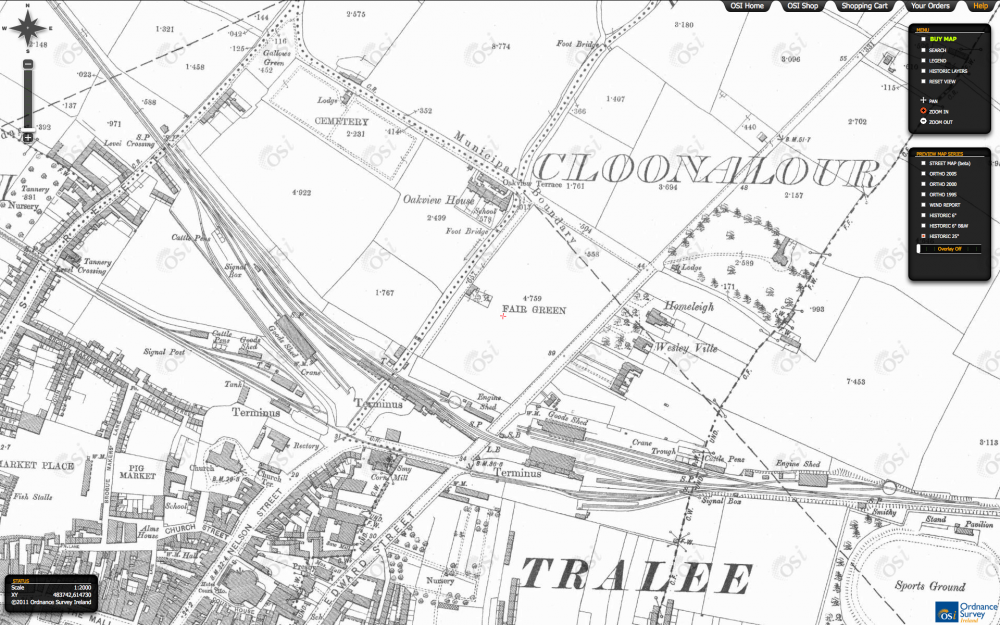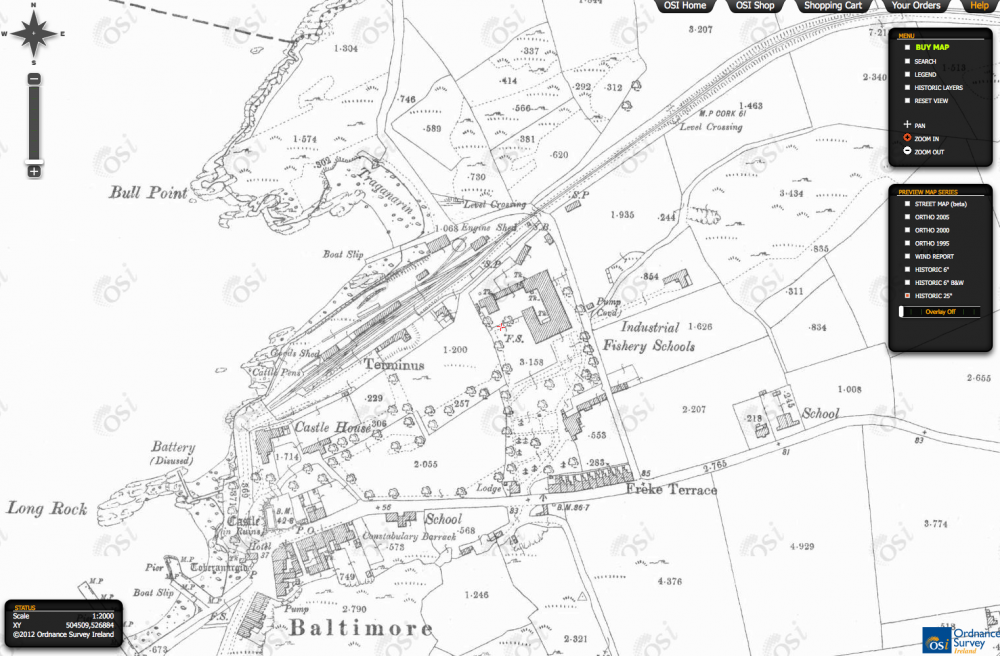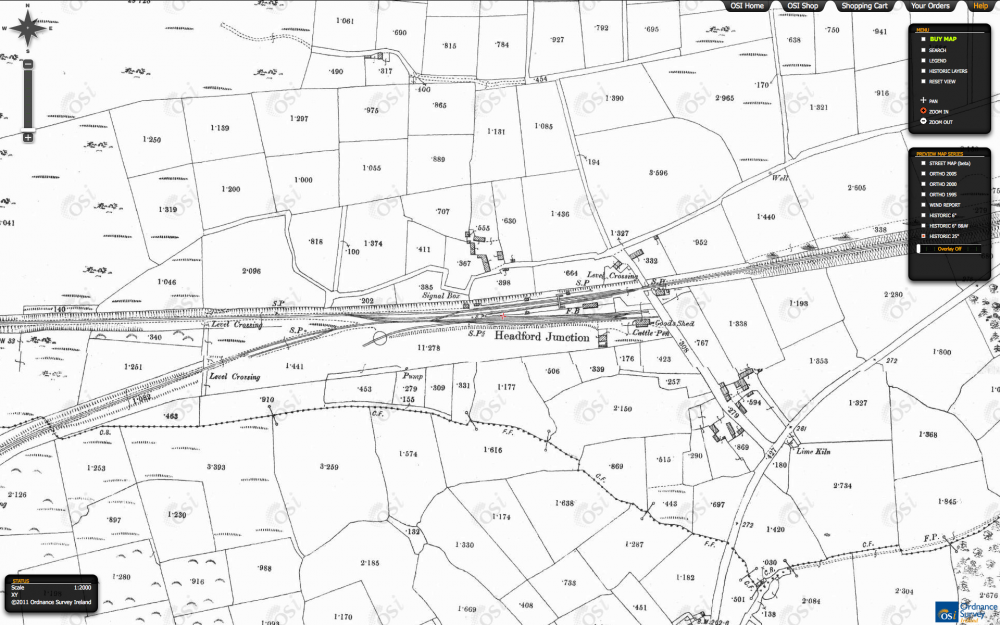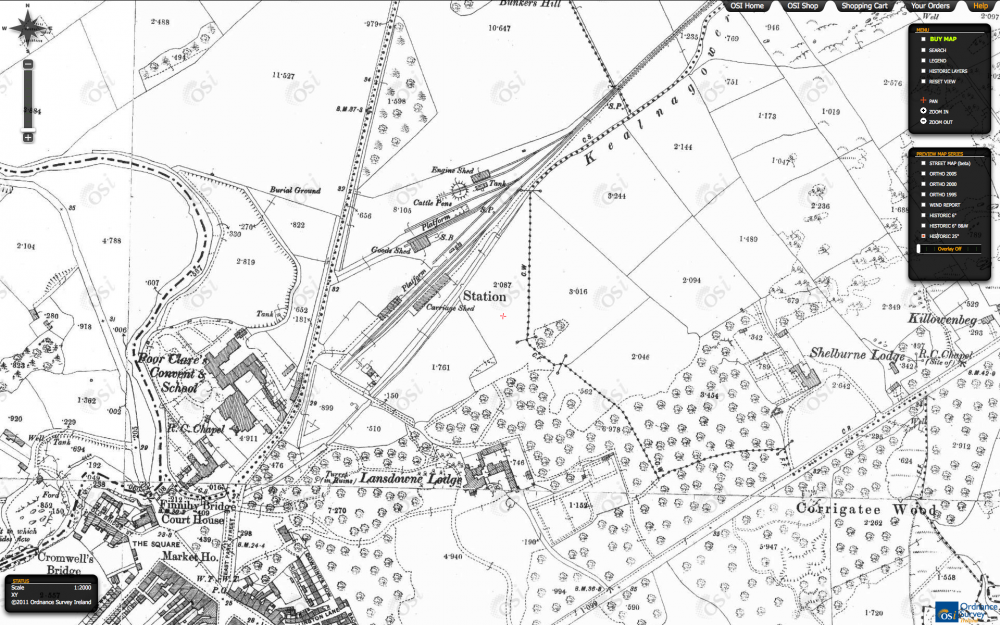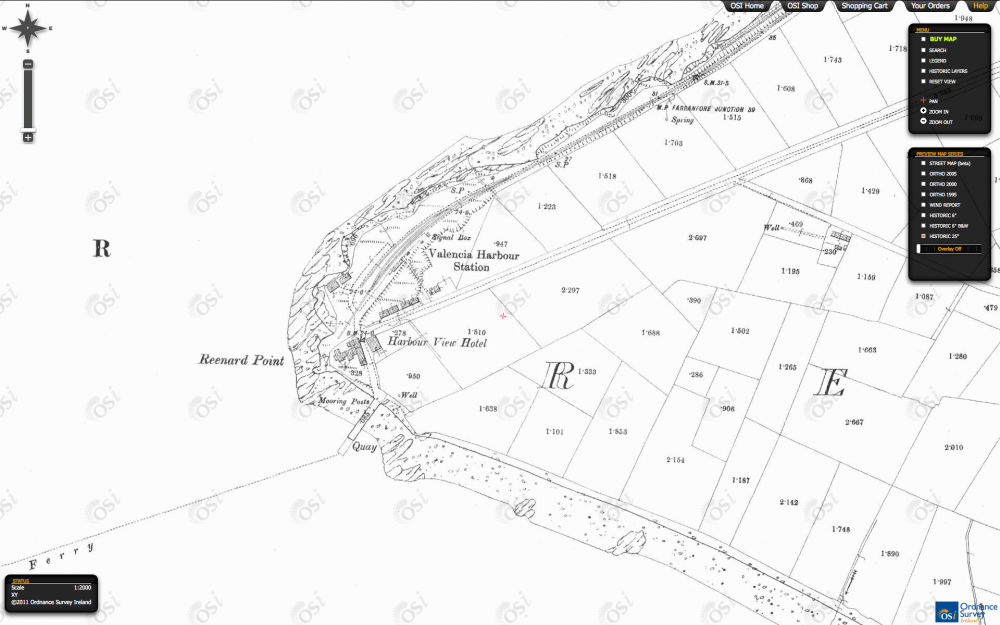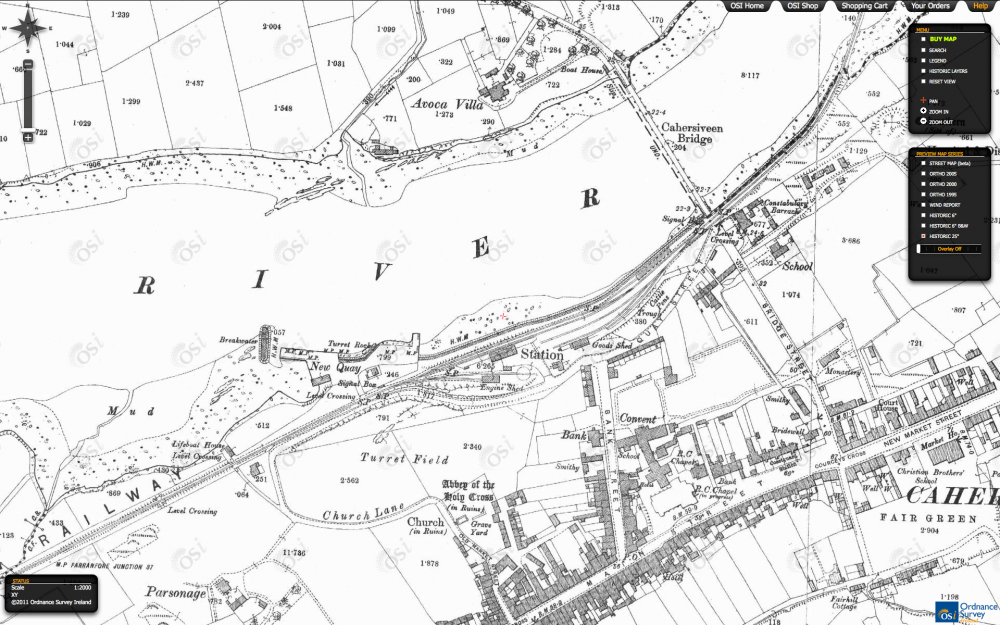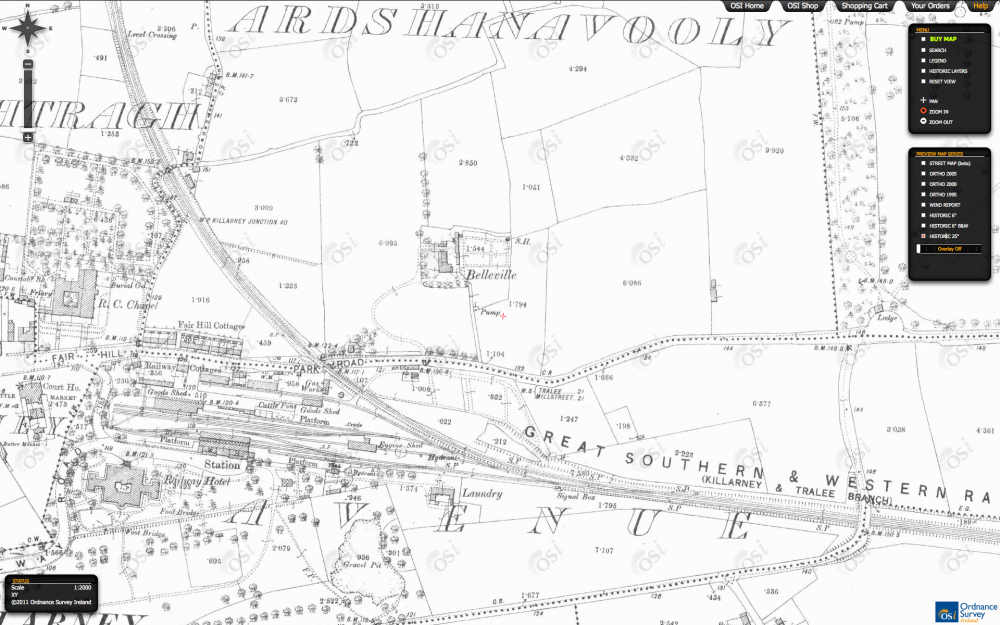
islandbridgejct
Members-
Posts
209 -
Joined
-
Last visited
Content Type
Profiles
Forums
Resource Library
Events
Gallery
Blogs
Store
Community Map
Everything posted by islandbridgejct
-
Hello Bob. Just logged on after a prolonged absence and was delighted to see your thread on Ballycombe, having followed it before on that other forum, and then I was dismayed to learn of your health problems and recovery. So much in the space of a few pages. So I just wanted to wish you good health in your new home, and I look forward to following your modelling progress on these pages. I should be down at the show in Blackrock, but instead I'm stuck here down the road from it, working, for my sins. Alan (PS, And reading about model railways to avoid working.)
-
GSR & Early CIE Coaching Stock
islandbridgejct replied to DiveController's question in Questions & Answers
I have a Pender and Richards book from 1967 of GSWR carriage diagrams. It has drawings of all GSWR coaching stock in 1924 if that would add to your collection. Is there a separate book with the later carriages? -
A DART every 5 minutes?
islandbridgejct replied to islandbridgejct's question in Questions & Answers
Thank you for that. That's exactly what I was looking for. I remember seeing the original of that layout back in the day. The stock seems more authentic now. A nice restoration job. Alan -
I wonder does anyone have a copy of any of the DART promotional leaflets distributed in the late 70s / early 80s saying that, when complete, there would be a DART every 5 minutes at peak hour and every 15 minutes at other times? I remember the 5 minute claim well, and wish I had kept a copy so I could say, "you promised." If anyone could provide a scan of one, I'd be very grateful. Thanks, Alan
-
CIE Laminate Coaches - Worsley Works - ECMbuild in 4mm
islandbridgejct replied to murrayec's topic in Irish Models
That really is an excellent build. Little short of perfection. On interior colours, the seating is spot on. Going from memory, the seat headrests were black soft plastic / leatherette. There were two types of seat, the high backed ones in most carriages, including Cravens and Park Royals, and a shorter headrest in others - I think they were the laminates. Inner sides I seem to recall as dark brown wood pattern. Sliding doors at the carriage ends were varnished wood (I think). I can't remember the ends at all. Some of the Cravens had a criss cross grey pattern on the inner sides, and a beige fabric on the seats, but that wasn't used on the laminates or on anything else. This was for the period 1976 to 1984. John, I seem to have been following you around Dublin in the early 80s because on a visit to Inchicore I saw carriages being stripped and I remember being told it was to remove asbestos from them, but I can't remember whether they were laminates or Park Royals, and I can't remember were they being reskinned or was it just work on the interior. In fact, thinking back on it, I hope I wasn't on them. Alan -
I suppose the railway was running for miles anyway, so there was no need to build the station short, and building it narrow might require less land. Alan
-
A very interesting and informative build, John. Thanks for putting it up. I'm thinking about the CSB approach for my J26 if I ever get started, but it seems to me that if one axle gets compressed up, the next one must expand down, and the third one must then go into compression - the law of the lever, if my memory is right. I'm afraid I'd get a visit from the crew of the Enterprise (Scottie, not the GNR(I)) telling me I cannae break the laws of physics. I was wondering about non-continuous springy beams instead, but then I'd need to double up on the number of handrail knobs to hold the beams which might be hard to fit in. I suppose it works fine for the CLAG boys in practice, so no need to worry about it in theory. Good luck with the build, and please post as you go along. Alan
-
Very impressive. Inspirational modelling.
-
Can't better that. Thanks.
-
So I decided to return to an old idea, based on the North Wall. This is the North Wall: But the layout was too clean and logical for what I had in mind: And this is how I envisage the different bits looking: It's a partial layout, only 3m long, showing the very end of a station, with some pretty improbable track arrangements. A passenger train arriving will pull in on the lowest line and it's engine and lead carriage or two will emerge from the train shed that covers the fiddle yard. The engine will be released along the middle road, and then the carriages will be pulled away. The carriages will then be placed at the departure road, with the end 1 or 2 again appearing outside the trainshed. Meanwhile, a second passenger train can arrive, drop its load, release the engine and have the carriages taken away. They will move to the departure road after the first train has departed. Or I could have one road for the GSWR train and the other for the Midland or GNR. I might assume the LNWR got the mail contract from the City of Dublin Steam Packet. Meanwhile, goods will be handled through the improbable station, backed up, and then shunted into the different sidings. Obviously, in reality, the direct route down the outside behind the train shed would be used, but that wouldn't let me find out if I actually like shunting puzzle layouts. So that's where I'm at, at the moment. It may be a case of 'Mallow or bust', but for the moment I'll try to build something smaller, and to get practice with difficult and unlikely trackwork, all within a space that could go up in the spare room. It will also give me time to build up my stock, starting with that J26. * Phew. That took a bit longer than planned. Alan
-
I wanted to have a look at Headford, to see what sort of space it would take. It worked out at 10m, 9m if I set the fiddle yards at 1.5m max. (The two lines at the top are a long fiddle yard, accessed from a swinging sector plate, 1.5m, at either end. If I put scenery on the sector plate, I can get photos of trains disappearing into the distance, and only destroy the illusion of space when I swing the line to put a train on or off. The lines at bottom left are an imagined industry to hide the main line disappearing towards Mallow. The branch at bottom left is the line for Kenmare - fish specials off the branch, and tourists heading for Kenmare, Parknasilla and on to Glengariff.) Now, if I could persuade herself to let me set up for operating sessions in the sitting room and dining room, I could actually run to 9m and this would be fun to operate. Chances of that? Hmmm, yes. You might say that, alright. And if I had a 9m space, wouldn't that fit Mallow anyway? Time to draw up Mallow: Lengthwise, I've probably lost about 2 to 3m, but I can still fit an 8 coach train at the mainline platforms, which would keep me happy. Fiddle yards would only be 1.5m long, though, so I'd only be able to run 6 coach trains, but how bad. Anyway, I was clearly losing the run of myself.
-
So I thought I'd better see what would work. The learning curve on Templot is steep, and it's hard to figure out what way Martyn's mind works, and the instructions are a bit hit and miss, and it's harder still on a Mac where the keyboard shortcuts tend not to work. But then you begin to get the hang of it, and you start saying, 'ah, I see,' and it gets to be quite fun. This is Bantry: The problem is that the pier extends beyond the end of the station, adding 1 to 1.5m to the length, so I ended up at 6m without a fiddle yard. I thought about cutting it down, but decided to have a look at how something based on Baltimore would look: The fiddle yard is at bottom right with a straight run into the platform at bottom left. The sidings at the top left are an imaginary pier alongside what is in reality a very shallow inlet (from which we launched when kayaking to Clear Island and the Fastnet*.) The kick-back sidings on the top right are for operating interest and to hide the fiddle yard. They'd also keep my copper mining idea alive. All the turnouts are B6 minimum. (* Gratuitous boast. I was actually sick as a dog coming back.)
-
I had visited Baltimore, and liked the station building. Suppose Roaringwater Bay was deeper, would it have made a good stopping place for the Atlantic liners instead of Cobh? I concocted an alternative history. The liners went to Baltimore, the GSWR bought the CBSCR and built straight across the Lee and into Albert Quay, making a direct link. It looked better than the way they built to connect to the Cobh and Youghal line. I could imagine a viaduct or lifting bridge to clear the shipping channels. Then I imagined the first years of operation, running the mail in two sections in order to squeeze it into the small station site. It could be fun. But then, there simply isn't a good anchorage between Sherkin and Baltimore, and I thought of how the Titanic ran aground there on her maiden voyage, her rusted hulk still dominating the skyline years later. Maybe not. The best anchorage would be where it was in reality: out at Castletownbere, with the fleet and the fishing and the Allihies copper mines over the mountains. Maybe I could run ore down from the mountains too. There'd be great viaducts at Garinish and Adrigole, and a station running onto a wooden pier in front of the town with the mountains behind. (This one is still attractive.) Or how about Bantry. There are great shots of the town and the station in the Lawrence collection on the NLI website, and a good recent article by Oliver Doyle in the IRRS Journal. Lots of pictures online too, and I got to visit the town for work and walked the site in the rain. There was a steamer service up to the Great War, out to Castletownbere, fish traffic, and I could justify my mine traffic here as easily as at Castletownbere. Plus, the railway vanishes behind the Station Hotel and a row of houses, so no problem getting off scene and into the fiddle yard. And if I was feeling bold, I could swap in the station building from Baltimore. It's easy to waste time imagining.
-
How about Tralee? It had potential. But I'd need to drop the North Kerry terminus. No harm in that though. On the other hand, a broad gauge - narrow gauge interchange is a bit of an Oirish cliché. Can't be playing to stereotypes now, can we, begorrah? Well, I ruled out every branch line in Kerry as too restrictive. I ruled out Sallins and Portarlington because I'd need as much stock as for Mallow, and they wouldn't be much shorter. And Portarlington didn't have great goods facilities. I ruled out any number of long, narrow stations on the basis that there wasn't much going on. I ruled out city termini because they were too big. I came up with a long list that included places like Kilkenny (good potential in a fairly small space), and Clonmel (nice and with a mix of GSWR and WLWR, but would it be a bit Castle Rackrent?) The shortlist came down to a decent terminus on the Atlantic, based on Baltimore or Bantry, or Headford Junction on the Kerry line. This is Baltimore: This is Bantry: And this is Headford Junction: Oh, before anybody gets excited, I haven't actually started anything yet. But I've got a fair way with just thinking. (Sorry.)
-
Right, that looks ok. The problem with Killarney is the shuntback and then the Tralee line rising above the station. Without that, it's not Killarney, and with it it's just too big and unwieldy. I looked at ways to fit it, and decided Mallow would be easier. So then I looked at every branch on the GSWR. Kenmare had potential: But it's not actually that much smaller than Mallow, and the buildings are useless. Valencia lacks operating potential: Caherciveen has potential but is as long as Mallow and needs a fiddle yard at each end: By this stage, you can see, I was getting picky. OK. Time to post and then carry on...
-
Zombie Alert - Dead Thread Rising Apologies for the prolonged absence. Was it really 2015? Gulp. Well, there was trouble at t'mill that took a bit of sorting out, and in the meantime I wrote a book. Didn't get it published yet, mind you; but I'll try a few more publishers now in the new year and, if all else fails, try self-publishing. Anyway, railways. This is Mallow: It's not a great image, but it's got everything - a main line, 2 junctions, small engine-shed, turntable, plenty of sidings, a great sweeping curve through the station. Mallow would be great fun, but it would be big - 6 to 8m long plus fiddle yards either end, or else far too much space to make a continuous loop. And it would take me far too long to build all the stock I'd need for it. I needed something smaller. Killarney is good, but would still take about 6m plus fiddle yard: I'm not sure how these pictures will display, so I'll post them now, take a look, and then continue. ...
-
I think the wooden sides and ends were on the 20t van. The 30 tonner had steel sides and ends. The SSM model is of the 30t.
-
Murphy Models Craven coaches white stripes
islandbridgejct replied to controller's topic in Irish Models
The diners were generally classed as buffets and converted from the CIE design based on the Bredins that preceded the laminate stock, so dating to 1950-56, rather than 1955 and post. (That's assuming I know what I'm talking about. I think there was a CIE design derived from the Bredins; but feel free to jump in and correct me.) They were numbered 2402-2422. 2402 was a diner. 2403 was a kitchen car. 2412 and 2416 were cafeteria cars. The rest were buffets. 2419-2422 ran on commonwealth bogies, the rest were on B4s by 1980. If I can get my scanner working, I'll post some pictures. I remember one Good Friday about 1980 getting on a midday Connolly-Dundalk train that was running with a van, open and buffet, instead of the regular van + 4 or 5, because most of the regular stock had been swiped for long distance trains. Conditions were tight.... Alan -
Murphy Models Craven coaches white stripes
islandbridgejct replied to controller's topic in Irish Models
My 3rd edition of Doyle and Hirsch says 1149-1151 were converted from super standard to standard in 1985, so 2 years before Irish Rail was created and the 2nd stripe introduced. They became 1558, 1548 and 1547. It lists them as introduced in 1970, so I think they reverted back to their original numbers which were missing from the main series of Cravens standards. So it looks like you have a 15 year window to run it as a 1st. I can't see anything about 1508-9, sorry. Alan -
Thanks guys. I use an engineer's scriber which seems to have a better point than the dividers I use to mark out the parallel lines (check 1). I do a starter hole with a 0.4mm drill (check 2). And I've tried the pin chuck as well as the archimedes with, I thought, less success, probably because it tends to wander while I'm turning it (check 3). Maybe I don't have the hole deep enough before I start drilling. Maybe I should just admit that I'm not very good at this. Maybe I should just try harder. At least I can see the hole is off centre. I suppose that's a start. Thanks for the suggestions. Alan
-
Very nice. I love the weathering. You got the single brake cylinder I see. Now all you need is a set of buffers for it to run into.
-
Thanks Andy. Do you know, I actually have one of those and one of the last things I did the last time I was modelling was to actually smack myself on the head, say D'oh, and get it out. :doh:Then I ran out of time. On an unrelated matter: I've a problem with my drilling. I can mark the place where I want to drill carefully - engineer's square, dividers, inter-cert maths approved method for bisecting an line, everything carefully marked out and centre punched, then set to work with the archimedes drill to avoid the sort of drift you get with the dremel. Then I take the drill out of the hole to examine my handiwork and it has ALWAYS and INEVITABLY moved at least 0.25mm, often more like 0.5mm. It doesn't sound much, but if you're trying to make something to within a few 100ths of a mm tolerance, and people keep telling you it will fall off if you don't, it's a bit of a pain. Has anyone out there got any top tips that don't involve expensive machine tools. Clearly a pillar drill with a proper chuck on the base to hold work would solve the issue, but I don't think I'd get away with setting one up in the study. Not an immediate worry though due to general lack of progress. Alan
-
Thanks, Glenderg. I'll see if I can manage a bit of progress over Christmas - probably shut the network down for 2 weeks, put on a replacement bus, then get out the soldering iron. I'll try not to make a habit of it. Alan
-
That's my job interview right there.
-
Management of this thread would like to announce that, as part of our new improved customer focused approach to modelling, we will, going forward be actioning new and exciting ways of achieving innovative results for all our stakeholders, and consistently striving to exceed expectations in producing exceptional models to the finest standards. Or, to put it another way, I've been doing F-all. It all began to go off the rails back in January when I ordered some bogies and w-irons from Bill Bedford. Great yokes but there was a delay in delivery from February to July, which didn't matter because work was taking up too much modelling time anyway - no point starting modelling after midnight. I tried knocking up some SSM w-irons, but to be honest I don't really like compensated wagons because they wobble too much. Anyway, I was having trouble getting them square and was a bit puzzled at how to deal with it. By the time I had it cracked, it was summer. August was holidays, and then I came up with my top secret plan to change career to leave more modelling time free, which has resulted of course in less free time for modelling. If they gave out medals for irony.... I'll get the thread back up in due course, but for the moment I'm just reporting that I've nothing worthwhile to report. Move along please, ladies and gentlemen, nothing to see here. Alan
.png.c363cdf5c3fb7955cd92a55eb6dbbae0.png)


